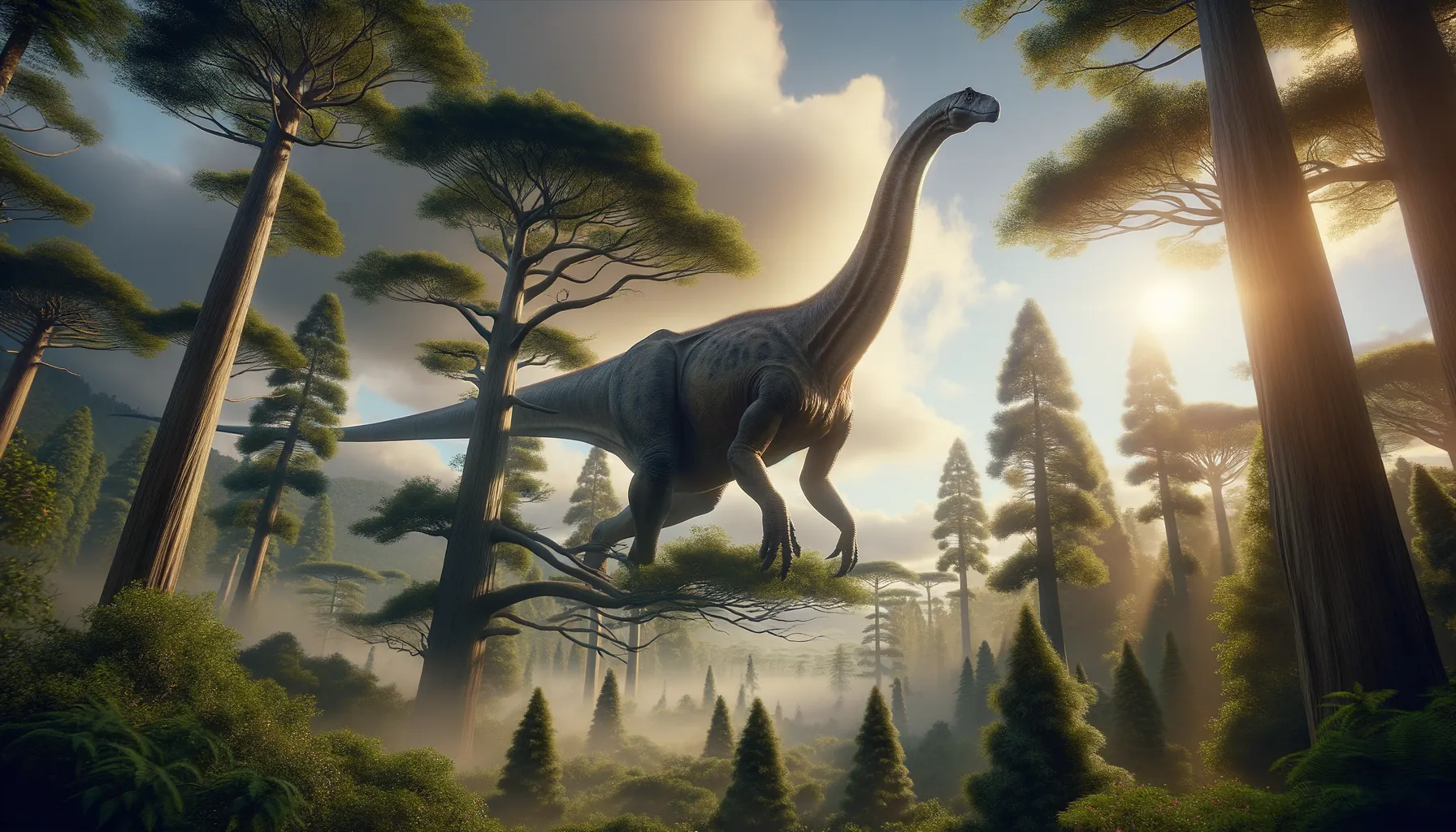
Giraffatitan
The towering giant from ancient Earth.
Period
Jurassic
Length
Measured approximately 26 meters in length.
Height
Stood about 12 meters tall at the shoulder.
Weight
Weighed between 30 to 60 metric tons.
Giraffatitan was a massive, long-necked dinosaur that roamed the Earth during the Late Jurassic period. It was one of the largest land animals, characterized by its towering neck, which allowed it to browse treetops for food. This herbivorous dinosaur is closely related to Brachiosaurus, and its fossils have provided critical insights into the lives of sauropods. Its immense size served as a protective mechanism against predators.
Diet
Giraffatitan was herbivorous, primarily feeding on high-growing vegetation. Its long neck allowed it to reach and consume leaves and branches from tall trees. The dinosaur likely swallowed its food whole, relying on gastroliths in its stomach to aid digestion.
Hunting
As a herbivore, Giraffatitan did not hunt other animals. Instead, it likely moved in herds to find abundant food sources, using its size and long neck to its advantage. Its large stature provided a formidable defense against potential predators.
Environmental challenges
Giraffatitan lived in an environment where competition for resources like food and water might have been intense. Seasonal changes could lead to fluctuations in food availability. Large predators also posed a constant threat, although its size likely deterred many attacks. It had to cope with the wear and tear on its body due to its massive size.
Speed
Slow; mainly due to its massive size.
Lifespan
Estimated to be around 70 to 100 years.
First discovery
Discovered in the early 20th century in Africa.
Fun Facts
- Giraffatitan was a massive dinosaur that lived during the late Jurassic period, around 150 million years ago.
- It was originally thought to be a species of Brachiosaurus but was later classified as its own genus.
- Giraffatitan is known for its long neck, which gave it a giraffe-like appearance, hence the name.
- This dinosaur was one of the tallest, standing about 12 meters (39 feet) high and possibly weighing as much as 60 tons.
- Giraffatitan fossils have been found in Tanzania, providing important clues about the prehistoric environment of Africa.
- The long neck of Giraffatitan likely helped it reach food from tall trees, making it a dominant herbivore of its time.
- Despite its size, Giraffatitan's neck was surprisingly light, thanks to hollow spaces within its bones.
Growth and Development
Young Giraffatitan could grow rapidly, needing to reach a considerable size quickly to avoid predation. Its growth would slow down as it reached adulthood, once it was large enough to deter most predators. Understanding its growth patterns provides scientists with insights into the life cycles of large dinosaurs.
Habitat
It inhabited lush floodplains and lightly forested areas where it could find sufficient vegetation to sustain its massive size. Its environment was warm, with plentiful water sources such as rivers and swamps. Seasonal rains would create lush landscapes, supporting diverse ecosystems.
Interaction with other species
Giraffatitan likely lived alongside other herbivorous dinosaurs, competing for similar resources. Its large size meant that it had few natural predators, with only the largest carnivores posing a threat. It likely played a role in shaping the vegetation structure by controlling tree and plant growth through its feeding habits.
Natural lifespan
It is believed to have lived up to 100 years in the wild.
Reproduction
Giraffatitan likely laid eggs in nests made on the ground, similar to other large dinosaurs. The eggs were incubated by the heat from the sun and possibly the surrounding vegetation. Little is known about parental care, but young dinosaurs could have been somewhat independent upon hatching.
Social behaviour
Giraffatitan might have lived in herds, moving together for safety and to find food efficiently. Herd behavior would have provided advantages like collective vigilance against predators. Communication among individuals in the herd could have involved vocalizations or visual signals.
Fossil locations
Fossils of Giraffatitan have been predominantly found in Tanzania, Africa. These discoveries primarily stem from excavations at the Tendaguru Formation, one of the most famous dinosaur fields of the early 20th century. Significant fossils found include a nearly complete skeleton, which revealed much about its anatomy and lifestyle.
